Greetings, book people! I’m back to work after a lovely week of vacation, though I am still hanging with family on the island, which is a nice change of pace, even for me, someone who thrives on routine. This week both my brothers are working here as well, and I am enjoying the camaraderie. They have many more meetings than I do—one is a software developer and the other is a scientist—and because I rarely understand what they’re talking about, their meetings make for enjoyable background noise. We’ll see if they feel the same way about my bookkeeping meetings later in the week!
This is not the first newsletter I’ve written about cities. I’m not a city person, and I think that’s part of why I like reading about them. The cities in these three books are living and breathing—sometimes literally. These are stories about people, yes, but they are also stories about the weird alchemy of cities themselves. Sometimes the human characters feel almost like an afterthought. We may build cities, but once they’re built they become something wilder and more complicated than anything their creators could have dreamed up.
The Books
Backlist: Grievers by adrienne maree brown (Speculative Fiction, 2021)
She couldn’t look at social media—her notifications were full of people sending “prayers and love” to her, or her family, or to the city of Detroit. At some point, these trite condolences had replaced the act of grieving, of actually feeling a wave of sadness. Before, a loss could make you gasp. Before, it reached your heart.
This book is a deep breath, a grief song, a queer Black ancestral ode, a celebration of community, a reckoning with aloneness, an elegy, a burning, a rebirth, a love letter to Detroit, a throaty broken exhausted cry, a fierce and tender guide into a messy-but-maybe-loving future, a quiet reflection, a rage pyre. It's silence and it's medicine and it's permission to hurt deep and long and it's instructions—loud ones—to pay attention and offer care, to refuse numbness, to sink our aching teeth into the raw stuff of this world, to slow down long enough to invite and create transformation.
I mean, it's a novel. But I read it the weekend after the shooting in Texas, two weeks after the shooting in Buffalo, and after I finished it, for the first time in weeks, I stopped moving, stopped compartmentalizing, stopped scrolling, stopped pushing all the heartbreak as far away from my heart as I could, and just sat with all the muck. It helped. In the weeks since, this book has been constantly on my mind, a gentle but steady push toward action and intention.
In some near-future version of Detroit, a mysterious illness causes people to simply stop living. They don’t die, not immediately: they just stop. Dune’s mother is the first patient. She’s in the kitchen, talking to Dune, and then she’s suddenly silent. The disease sweeps across Detroit, affecting mostly Black residents, and soon the breathing, living, vibrant, chaotic city turns to silent stone. Bodies pile up in morgues and hospitals. Quarantine descends. Dune, grieving her mother and the life she used to have, and taking care of her silent grandmother, rides around the city on her bike, searching for patterns behind the plague.
She begins keeping track of who’s sick and who isn’t, who’s died and who’s still living. She builds on a massive physical model of Detroit her father kept in their basement, and catalogues stories. She records where people were when they got sick, what they were wearing, what they said. She saves their names. She meticulously gathers all of these details, as others flee the city, as politicians argue about what to do, as hospitals shut down due to lack of staff. Dune pays attention. She stays. She witnesses, and she honors.
She agreed with Eloise in theory, somehow it was the city itself that was sick, both source and victim of this endless loss. She just didn’t have somewhere else she wanted to be. She couldn’t imagine leaving the cocoon of mother-grief, the house were her memories were shaped, the streets where her parents loved her out loud.
There is so much beauty and devastation in this book, so much more to say about it. It’s about grief and the space grief takes up and the space this world does not allow grief to take up, about what happens when we let atrocities go ungrieved. To me, it feels scared—a sacred lesson. Sometimes a book arrives at exactly the right time. I didn’t know how badly I needed this one until I read it.
This is also a book for the Black people of Detroit, and that's not me. So, as always with books not mine and not made for me, but that I get to learn from and love—deep and humble thanks to brown for the gift.
Frontlist: Vagabonds! by Eloghosa Osunde (Fiction)
There is city and there is spirit and the two coincide. Yes, this is about the texture of the bridge, the smell in the air, the thick noise everywhere, the inimitable attitude. But there is who the city is at the core: a glow-in-the-dark something, a luminant orb at night, a maelstrom, quicksand spinning. (Not a place, an idea. Not a place, an energy.) There’s the spirit named in its mother tongue; ruthless, faceless whirlwind dancing between land and sky.
This is a strange and glimmering book that’s hard to describe in a way that makes sense. It’s a book about Lagos and the people who live on its fringes—queer, poor, unruly, unseen. Tatafo, the narrator, is a henchman/spokesperson for Èkó, who I understood to be the spirit or embodiment of the city. We never meet Èkó (the Yoruba name for Lagos), but we do get to know Tatafo, who provides commentary between a series of interconnected stories. Tatafo (whose name means “Blabbermouth. Minder of all business. Gossip.”) acts as a guide to Lagos: how to live there, how to die there, what you need to do to survive there, what the city loves, what it hates, its secrets, its dreams.
Tatafo pops in and out, but the book is mostly a symphony of smaller stories. A devil possesses various characters, moving between their bodies. Wura, an artist who makes personalized dresses, has cancer, and decides to die in her own way. After she’s gone, her lover writes her a series of beautiful letters. She tells Wura about all her past lovers, including her first love and first heartbreak—she and her first love, seeking safety, began to wear the masks and suits of men out in the world. But eventually the masks took over, and she hardly recognized her lover, who lived her life dressed up in the trappings of manhood and power.
In another section, two sex workers, Divine and Daisy, go about their ordinary everyday life. Their tender domestic routine is full of sweetness, even when they’re reflecting on the traumas of their childhoods.
Yes, all the things that hurt underneath a good life didn’t just go away because you were now loved. But it helped to see each other. And, they did. They saw each other so far past the pain that, no matter how hard their families tried to unseen them, they could never be invisible again.
There are dozens and dozens of other characters, mostly queer, falling in love, messing up, having chance encounters on buses and city streets, trying to survive amidst poverty and familial rejection. Sometimes the stories bleed into each other; sometimes they feel entirely separate.
I didn’t understand every nuance of this book. I can’t remember the details of each section. But I felt these stories, these people, the pulsing life of Lagos, in my bones. I felt the joy that comes from being seen. I felt the violence of being forced to wear masks, of not having anywhere safe to take off your outside face and live as yourself. I felt the slow drip of shame and confusion that can destroy you when all those other faces become your true face. This is a book about the faces we wear. The spaces we inhabit. All the lives our lives touch. It’s full of glorious, raucous, hard queer life: queer people dancing and fucking and finding solace. Queer people longing. Queer people grieving. Queer people getting free. Reading this book I felt myself awaken to the rhythms of a city I’ve never been to, the messes and contradictions and small delights and big heartaches of complicated places. I felt the thick heat on my skin, the sweat shimmering, the shadowy loneliness of water. I felt the busy streets, the empty stress, the bustle of moving people, all with their own guilt and sadness and preoccupations. I loved sitting with the fullness of all these interconnected lives.
Here is a city, Tatafo seems to be saying. Here are people struggling and fucking, dying and entering the spirit world. Here are two women in love. Here is a daughter, arriving at the right time because someone needs to be a mother. Here are the streets, the rain, the music. Here are bodies reaching for each other. Here is an apartment full of queer friends holding each other up. Here is a woman being abused by a man, and here she is leaving him, and here she is finding her freedom. Here is a missed connection, here is a fight. Here is a devil, making mischief. Here is a party. Here is dancing. Here it all is—look. It doesn’t have to mean anything. It’s simply a whole lot of life, being lived, and a whole lot of death, dying, and maybe that’s what a city is, in the end. A collection of messes, a beautiful weaving of memory and loss, a never-ending entanglement.
Upcoming: Ducks by Kate Beaton (Graphic Memoir, Drawn & Quarterly, September 13th)
I’ve been sitting here staring at this blank white screen for a while now, trying to figure out how to write this review. This book absolutely wowed me. It’s one of those books that feels impossible to summarize or explain. My instinct is to say: go read this immediately! and leave it at that. It is a hard and gorgeous memoir about a complicated place. I love books about places. I love books about contradictions. I love books that don’t tell simple stories. I love books that leave questions unanswered. This book does all of that and more. It’s about home and belonging, about leaving and coming back, about the power of female friendship, about violence, about what makes a city. It is devastating. It is confronting. It is so thoughtful. It’s a big story, masterfully told.
In 2005, at age 21, Kate Beaton left her home in Nova Scotia for a job in the Alberta oil sands. Her goal was to pay off her student debts—something she couldn’t do in Nova Scotia. Over the next two years, she worked for various oil companies, both in work camps and in the city of Fort McMurray. She was one of very few women in an industry dominated by men. The camps, isolated work environments run by exploitive corporations, had few protections for workers and no mental health services to speak of. Beaton brilliantly explores the ecosystems—human, natural, industrial—of these strange and temporary cities.
It’s hard to describe the experience of reading this book, in which Beaton writes and draws the rampant sexism and misogyny she encountered with exhausting precision. There are panels upon panels of men making sexist jokes, men harassing her, men ignoring and belittling her, men gaslighting her whenever she tried to voice her concerns. She also writes about (and again, draws, devastatingly) the sexual violence she and others experienced in the camps.
And here’s the both/and that makes this book so brilliant, because Beaton also captures moments of tenderness. Most of the men she works with are also from the eastern provinces—Nova Scotia and Newfoundland. While this makes the toxic masculinity she encounters from them even more painful at times, she also makes unexpected connections with them. This book is full of humanity. Beaton writes honestly about the horrors of the camps, and makes no excuses for the men who harmed her. But she also tells another story, a story about loneliness and isolation and economic desperation, about what drives men to the camps, about environmental destruction, about the dangerous intersections of transience, lack of opportunity, and corporate greed.
There are so many conversations that directly address these complexities, and the fact that there is never a single story about a place. At one point, Beaton is talking with a friend and coworker (also a woman) about an article she’s been asked to write about her experience with harassment in the camps. About the reporter, she says:
I don’t think people like her believe that the men they know wouldn’t be any different. They don’t think that the loneliness and homesickness and boredom and lack of women around would affect their brother or dad or husband the same way—I mean, why would they? They don’t think about it at all. They never have to.
She goes on:
The worst part for me about being harassed here isn’t that people say shitty things. It’s when they say them and they sound like me, in the accent that I dropped when I went to university. That they are familiar. And that this place creates that where it didn’t exist before. This place. It’s not an excuse, it’s just…the worst thing is that your heart breaks.
She feels conflicted about talking to the reporter, not because she doesn’t want to speak out about her experiences, but because she doesn’t want her reality to be simplified beyond recognition.
“I don’t know, you can’t just paint one picture for an article,” she says. Her friend, referring to the men who’ve harassed them both, replies: “It’s fucked up to be in a position of defending them.” Beaton says: “Am I defending them? I don’t know, just, they are still my people. Even at their worst, they’re more mine than she is.”
The exchange ends like this: “So what the fuck. What the fuck, anyway.”
What the fuck, indeed. Beaton may not have been able to distill her experiences for one thirsty reporter when she was twenty-two, but she has done it beautifully in this memoir.
In another conversation, Beaton says: “Going to Alberta was like going to the moon. It was just so far beyond. Now I can’t extract myself from having gone.”
And perhaps this is the heart of it. We can’t extract ourselves from our pasts. We’re all complicit, to some extent, in the evils of this world. I didn’t know anything about the oil sands before reading this book. I thought of them as purely evil, and never considered looking any closer. Beaton is up front about their evils, but she refuses to end the story there. She looks closer.
Please believe me when I say I have not done this book justice. I haven’t even gotten to the art. It moved me, it challenged me, it gutted me. I am so grateful for it.
It’s out September 13th and you can preorder it here.
The Bake
Picking wild blueberries is one of my favorite summer traditions. My go-to blueberry dessert is my family’s blueberry duff—yes, it’s cobbler, and no, we don’t call it that. But it’s been too hot to bake recently, so last night I made some no-bake cheesecake bars instead. These are so easy! You can use whatever berries you want, and tweak the cheese mixture to your liking. I used ricotta, but mascarpone or even goat cheese would work just as well. Substitute lime zest for lemon, use walnuts instead of pecans, or leave the nuts out—whatever you do will be great. As you can tell from the picture, my family happily devoured them.
No-Bake Blueberry Cheesecake Bars
Adapted very slightly from Mark Bittman via NYT Cooking
Ingredients:
8 whole graham crackers, crushed
1/4 cup pecans, finely chopped
3 Tbs melted butter
8 ounces cream cheese, at room temperature
1 cup ricotta
2-4 Tbs honey, to taste (I used 4)
zest of one lemon
pinch of salt
1/4 tsp vanilla
2 cups fresh blueberries
In the bottom of a 9x9-inch baking dish, combine the melted butter, crushed graham crackers, and chopped pecans. Mix with your hands and then pat the mixture down evenly into the bottom of the pan. Keep in the fridge while you make the filling.
Combine the cream cheese, ricotta, honey, lemon zest, and vanilla in a medium bowl. Mix vigorously with a wooden spoon or handheld beaters until smooth. Taste and add more honey or lemon zest to taste.
Spread the mixture evenly over the graham cracker crust. Scatter the blueberries on top. Cover and let chill for at least one hour (ideally 3-4) before serving.
The Bowl and The Beat
The Bowl: Five Delicious Potluck Salads
I was on vacation last week with my parents, brothers, sisters-in-law, and nephews. My family is very good at cooking, which is a treat, especially since I live alone and usually have to cook for myself. It also means that while I’ve been contributing to meals, I haven’t made any of my typical simple dinners recently. So instead of a recipe, here’s a tour through the five salads we collectively made for a big family dinner on the beach the other night—I highly recommend them all!
My brother made a (slightly tweaked, he tells me) version of this herby three-bean salad from Melissa Clark via NYT Cooking. My sister-in-law made this delicious pasta and fried zucchini salad. My mom made this herby potato salad with smashed olives (also tweaked).
My mom also made a wonderful beet salad, absurdly simple. Roast beets and slice them into rounds. Steam the beet greens. Layer the greens on a platter, followed by the sliced beets. Drizzle with olive oil and sprinkle with salt and pepper.
I made a watermelon feta salad, which is also absurdly simple and the most delicious. Chop a watermelon. Toss it with fresh mint leaves, crumbled feta, salt and pepper, and lime juice to taste. Yuuuuuum.
The Beat: Patricia Wants to Cuddle by Rebecca Allen, read by Cindy Kay, Justis Bolding, Laura Knight Keating, Susan Bennett, and Jasmin Walker
I don’t read a lot of horror, partially because it can be so hard to figure out how scary a book actually is. I do not like to be scared, and I don’t like a lot of gore and violence. But I’m getting more and more into weird WTF books. I like novels that are strange, a bit eerie, and a little disturbing. So I’m trying to branch out more! I loved Allen’s first book, Real Queer America. This is, obviously, totally different. It’s a satire about a Bachelor-like reality TV show being filmed on a remote island off the coast of Washington. So far, I’m enjoying it. I haven’t gotten to the weird twists yet, but I’m looking forward to being surprised. The narrators are all excellent.
The Bookshelf
A Picture
I’m spending most of July with family, which means the books my nephews (8, 10, 12) are reading are scattered all over the house. Here’s a random stack of some of them. I think they have pretty good taste—I loved Elatsoe!
Around the Internet
On Book Riot, I wrote about how listening to romance audiobooks before I fall asleep has changed my bedtime routine for the better. I also made a list of some of my favorite indie presses for queer book lovers. On Audiofile, I wrote about three audiobooks featuring internal and external journeys. My review of Big Girl is up on BookPage.
Bonus Recs about Living Cities
The Impossible City by Karen Cheung is a beautiful memoir about Hong Kong. Boys Come First by Aaron Foley is a fun novel about Detroit. Scarborough by Catherine Hernandez is a wonderful book about the interconnected lives of the residents of one Toronto neighborhood.
The Boost
Here’s something frivolous for you: worldle—geography wordle! I got bored of wordle a while ago, but my whole family plays various word games daily, so I’ve been sucked back in for the time being. I had never heard of worldle, though, until my cousin mentioned it. Every day it gives you the outline of a country and you have six tries to guess it. I have yet to get one, but I’ve been enjoying it immensely.
As always, a little bit of beauty to send you on your way: This is my favorite combination—beach grass, sea, and sky.
Catch you next week, bookish friends!

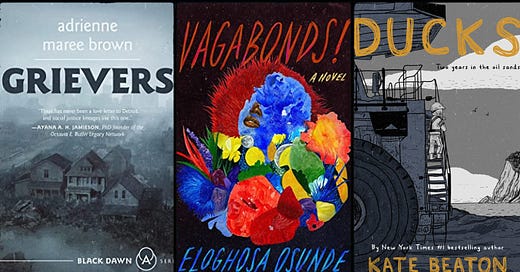



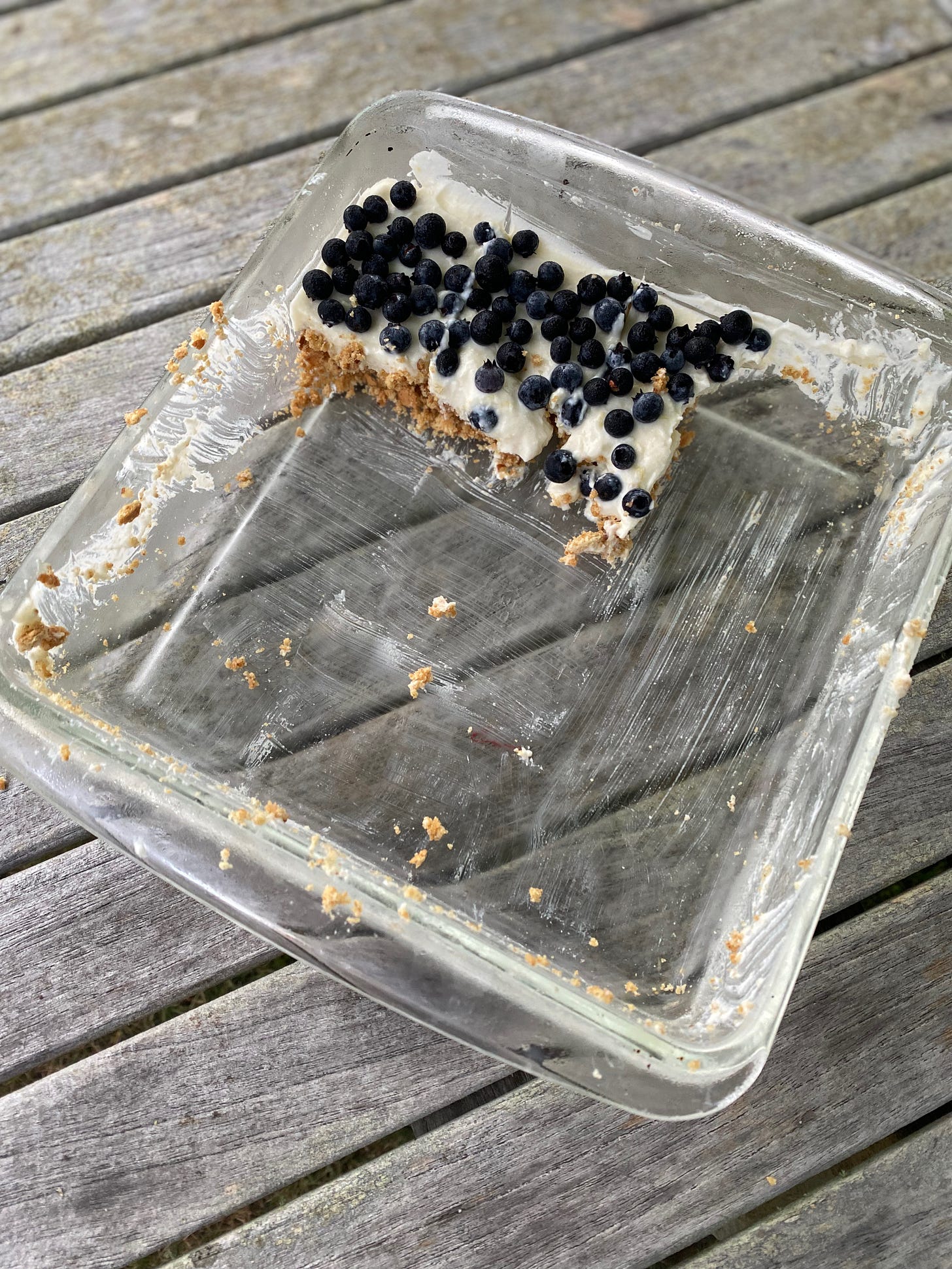
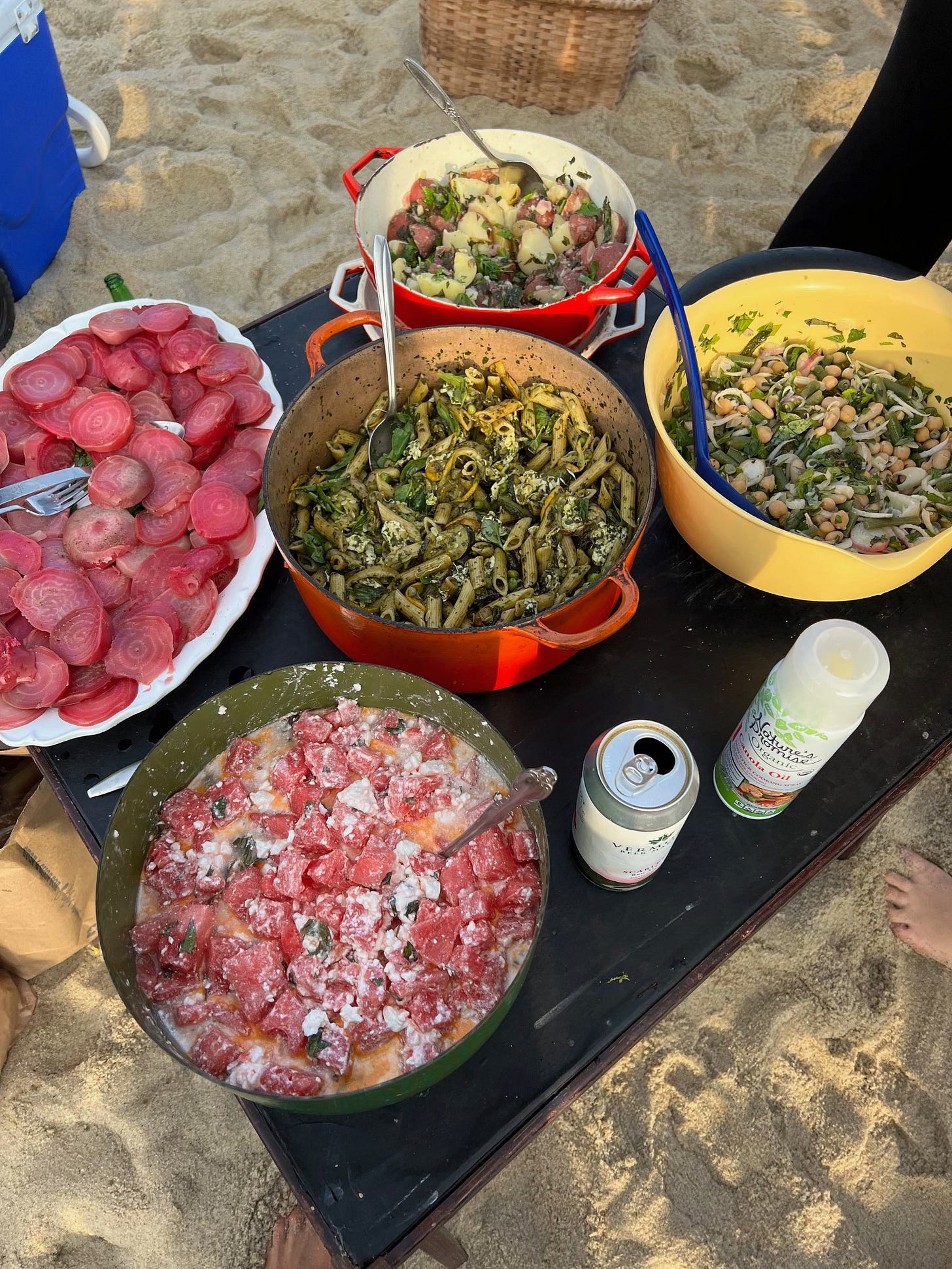

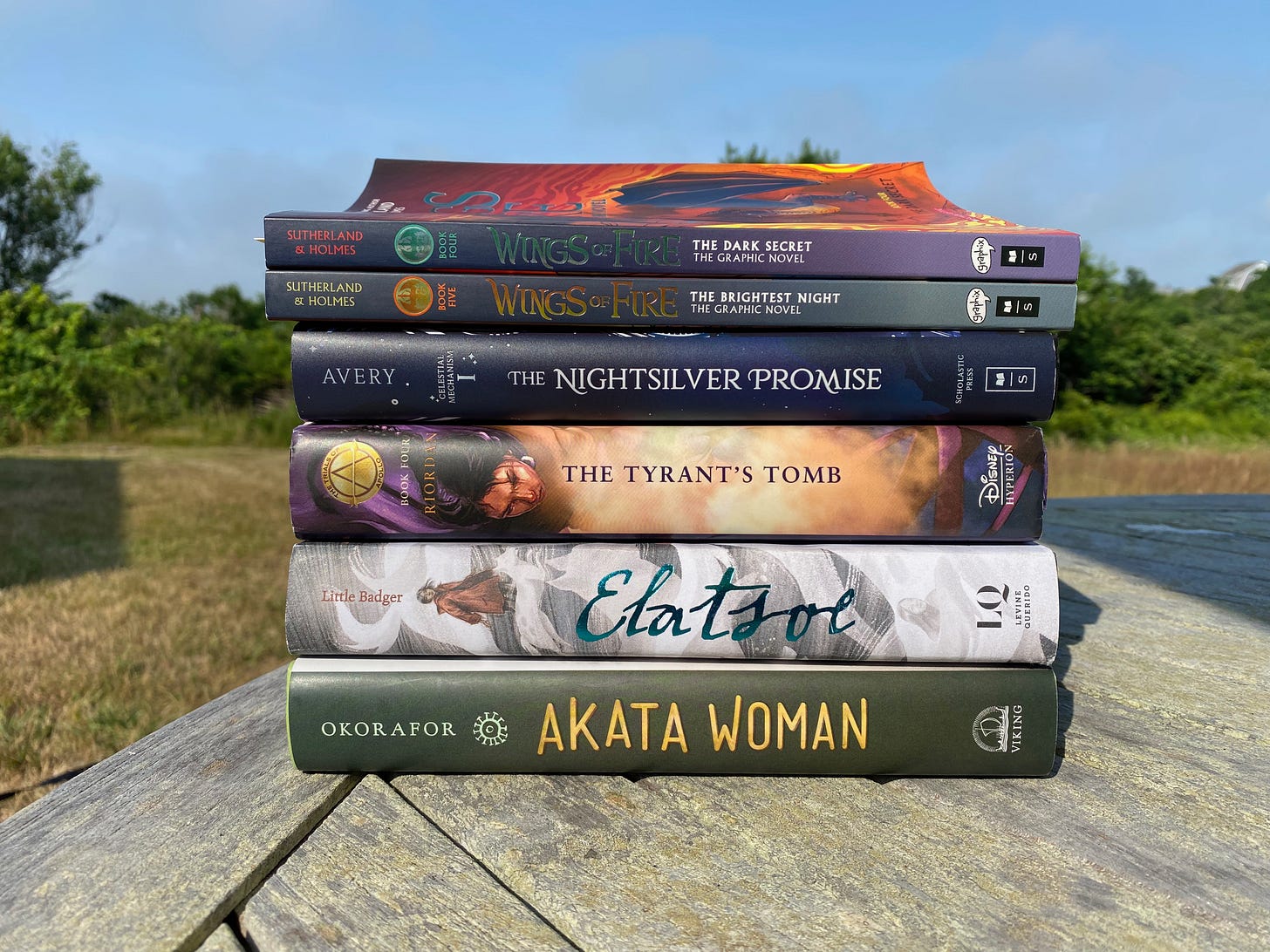
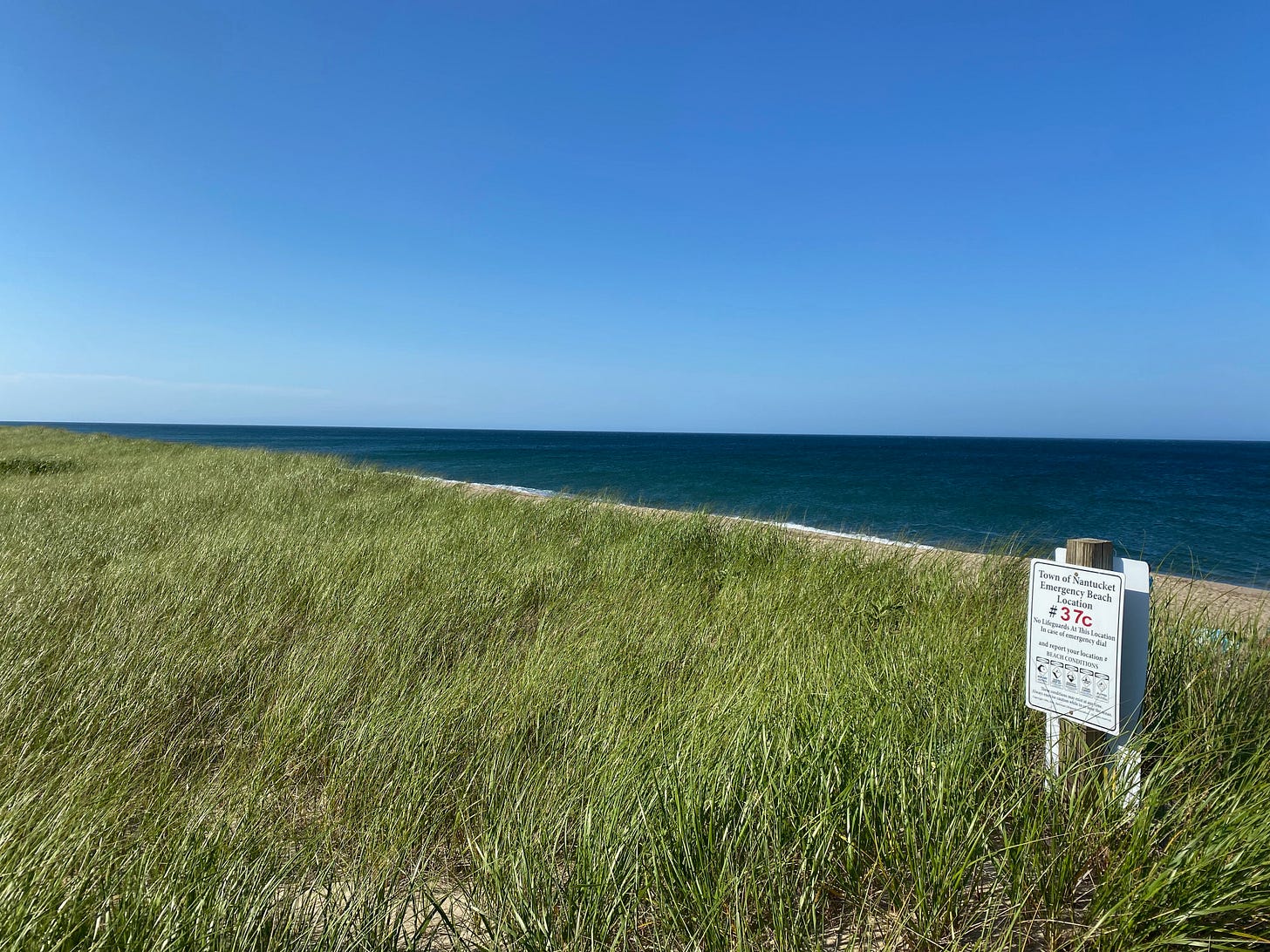
You are such an excellent reviewer, Laura -- here and otherwise. (It always thrills me to bits when I see your byline in Bookpage!) These books sound amazing.